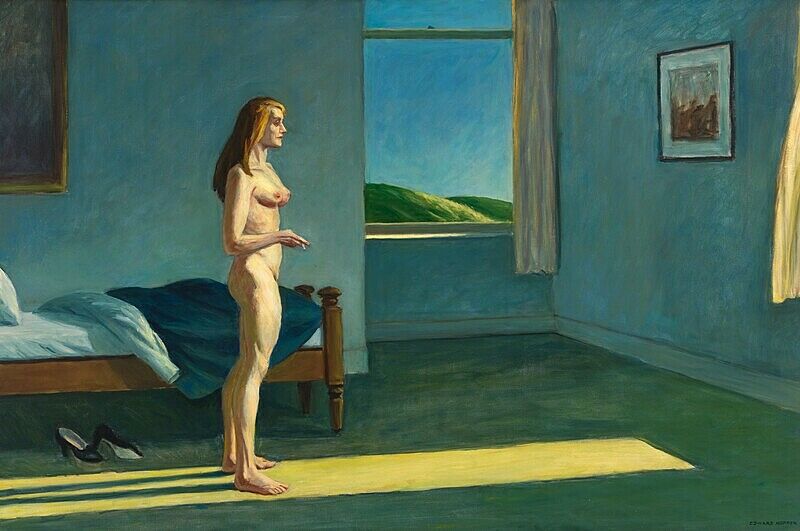Synthesis: Brandon Talks Hopper
Mar 17, 2011
We recently had our first Youth Insights tour of the spring. YI Leader Brandon blogs about a work that he likes to focus on in the galleries.
Edward Hopper's work A Woman in the Sun (1961) is one of the paintings in the exhibition, Modern Life: Edward Hopper and His Time. A close look reveals that the work epitomizes Hopper's synthesis of realism and abstraction. Though Hopper is best known for his scenes of alienation (both rural and urban), A Woman in the Sun suggests that Hopper was thinking about abstraction. Many have suggested that works such as Nighthawks (1942) and Early Sunday Morning (1930) nearly resolve into Cubist geometries. I see this resemblance and indeed it is what makes Hopper's works unique and modern. What makes Woman in the Sun one of my favorite works is that synthesis, a meeting of two styles in a surprising place.
The connection between the characters and backgrounds that inhabit Hopper's works is also linked to the synthesis of abstraction and realism. Here, three main features are depicted: the landscape outside the window, the vacuous room within, and the body of the protagonist. The room is unnaturally expansive. Just outside the vast window, rolling green hills echo the landscape of breasts and buttocks of the female figure in the foreground of the painting. As she stands in a rectangle of warm sunlight, her body is a manifestation of her emotions. She is also a giant, disproportional to the bed at her side. The walls of the room retreat in cool blues while the floor expands in greens. The curtain on the far right, moved by the breeze from an open, unseen window, hints that the exterior is invading the interior but seemingly making no progress. Hopper accentuates the woman by portraying the life of all that is around her. Hints of abstraction make the work what it is: a liminal space with subtly misplaced proportions that contribute to ever-shifting focal points.
By Brandon

